You are here
Back to topRelationship between Load Capacitance and Transient Response
A reliable power converter focuses on output voltage stability. Therefore, when designing a power converter, it is necessary to discuss the amount of change in the reaction of the load change of the application circuit corresponding to the output characteristics of the power converter, which is also called the amount of change in the transient response of the load.
This article describes what meaning of transient response, introduces how to occur and what factors to affect, and observes the effects by measuring the output voltage waveform in a DC-DC converter.
1 What is Transient Response
The transient response refers to the process of changing the output voltage from the initial state to the steady state when the output load changes, that is, the amount of change in the output voltage that has not yet reached the steady state, for example, the variation of output voltage VOUT and the inductor current IL during the charging and discharging of the capacitor of the buck converter. The small signal model for output equivalent capacitor contains the equivalent series resistance (ESR) and the equivalent series inductance (ESL), and both of which cause the change of the output transient state, as shown in Figure 1.
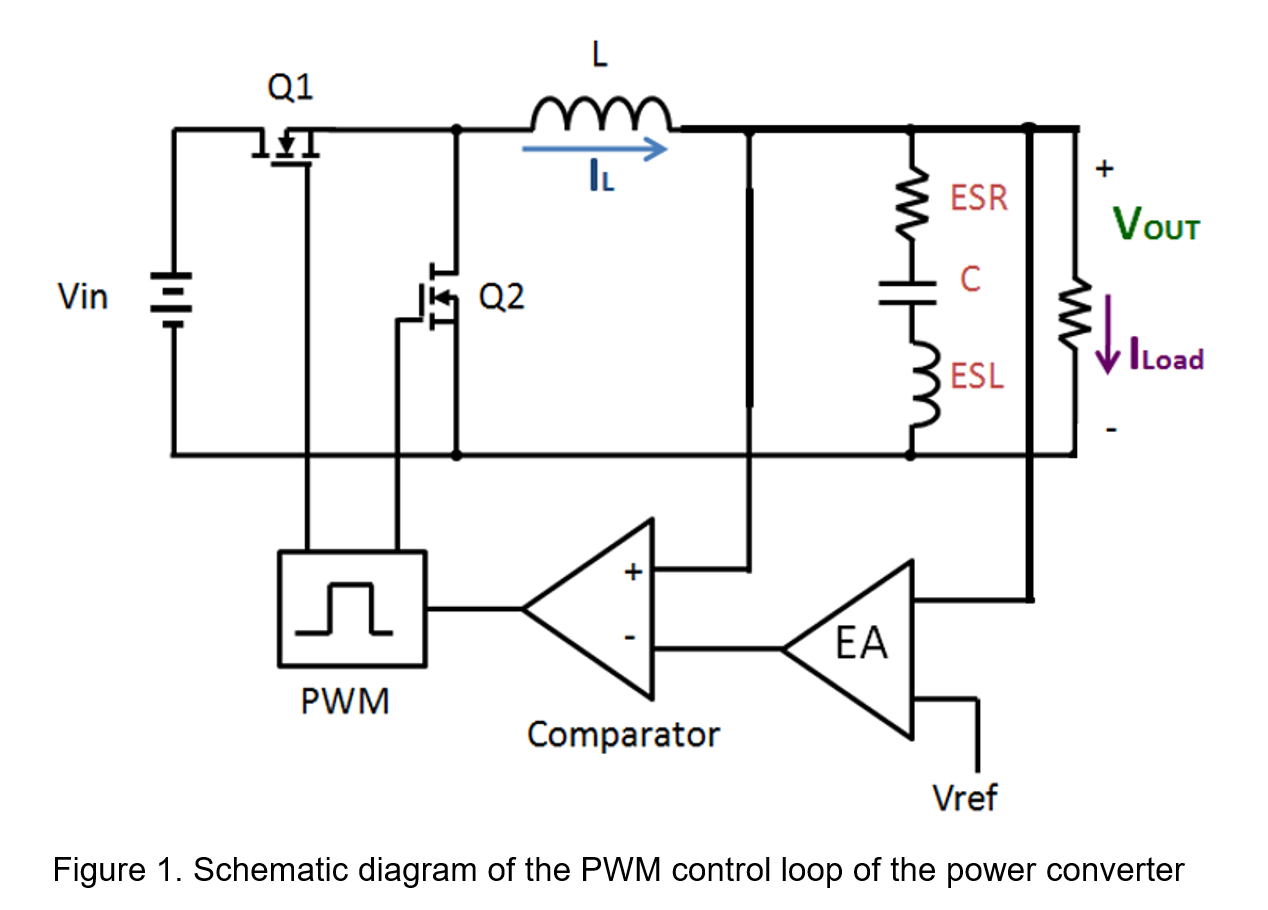
When the load current transiently becomes large, the ESR and ESL of the output capacitor reduce the voltage on both sides of the output capacitor because the converter cannot provide enough current immediately. The ESR causes the output voltage drop and the ESL causes the oscillation surge. According to the inductor characteristics, the surge generated by ESL is related to the time of load change, if the load change time is faster, the voltage surge generated by ESL is larger, as shown in Figure 2.
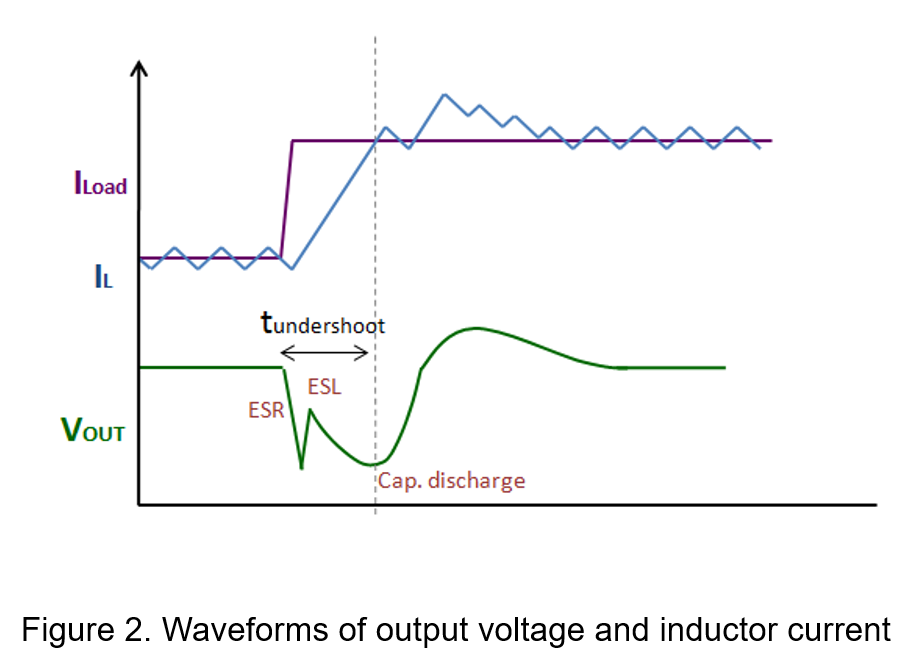
When the output capacitor starts to discharge, causing the output voltage to drop rapidly and then sensed by the Error Amplifier. Then adjusts the output voltage through the feedback loop by increasing or decreasing the duty cycle of the power transistors (Q1 and Q2) so that the inductor current of the next cycle rises to meet the load current and charge the output capacitor, finally the output voltage achieves stabilization.
Figure 3 shows a typical transient response waveform. When the load current goes from 75% to 100% and back to 75% of the measurement condition, when the load increases instantaneously, the voltage will drop suddenly and then slowly return to the set value.
This period is called the transient response time, the amplitude is called the transient response voltage. In order to minimize the impact of the response time and voltage on the load terminal, an external capacitor can be added in parallel to reduce the impact of the transient response.
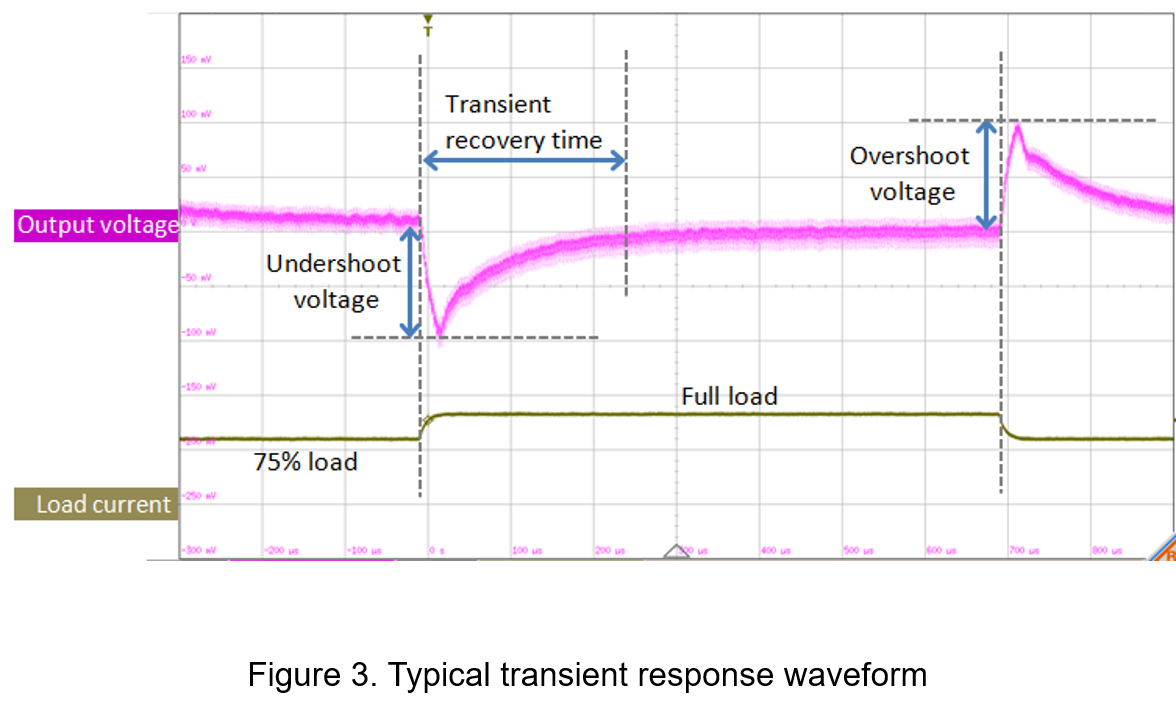
2、Influence factors of output capacitance on transient response
There are many factors that affect the transient response, such as the bandwidth and slope compensation of the internal control loop, the PCB layout and the components used, and so on. However, these characteristics cannot be changed by the user of the product, and can only be changed at the output end by adding a capacitor. It should also be noted that when using large capacitors, the ESR of the capacitor equivalent resistance becomes lower, which changes the zero frequency of the original power converter control loop and affects the bandwidth and phase margins, but increases the undamped oscillation of the output voltage and even the continuous oscillation of the output voltage, which eventually extend the transient response time.
| Vs | 10V |
| VO | 5V |
| CO | 44uF |
| Lm | 14uH |
| IL slope | 125mA/us |
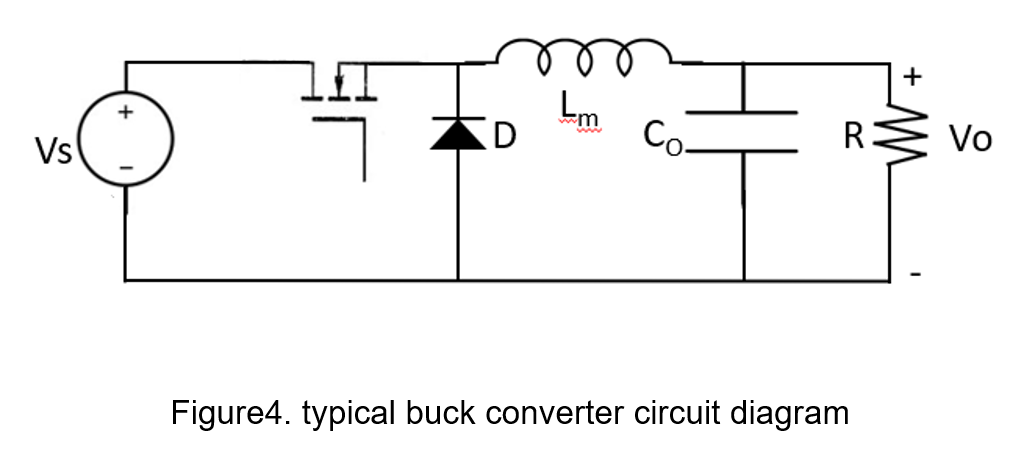
When using the electronic load to control the output load variation from 50% to 100%, it can observe the transient time and the output voltage change waveform by the output capacitance is adjusted. Figure 5 shows the measured waveform of the 44uF capacitor, and the transient voltage drop is 73mV.
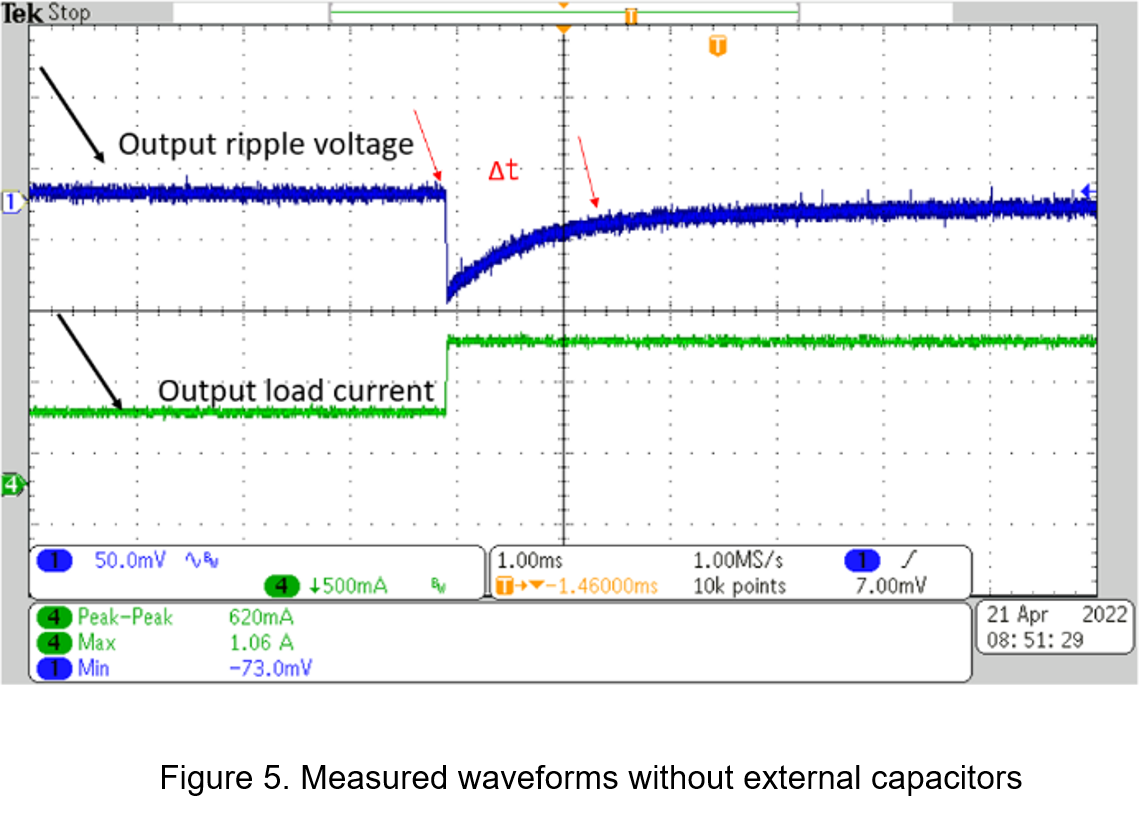
Figure 6 shows the measured waveform of the output capacitor 514uF with a transient voltage drop of 59mV.
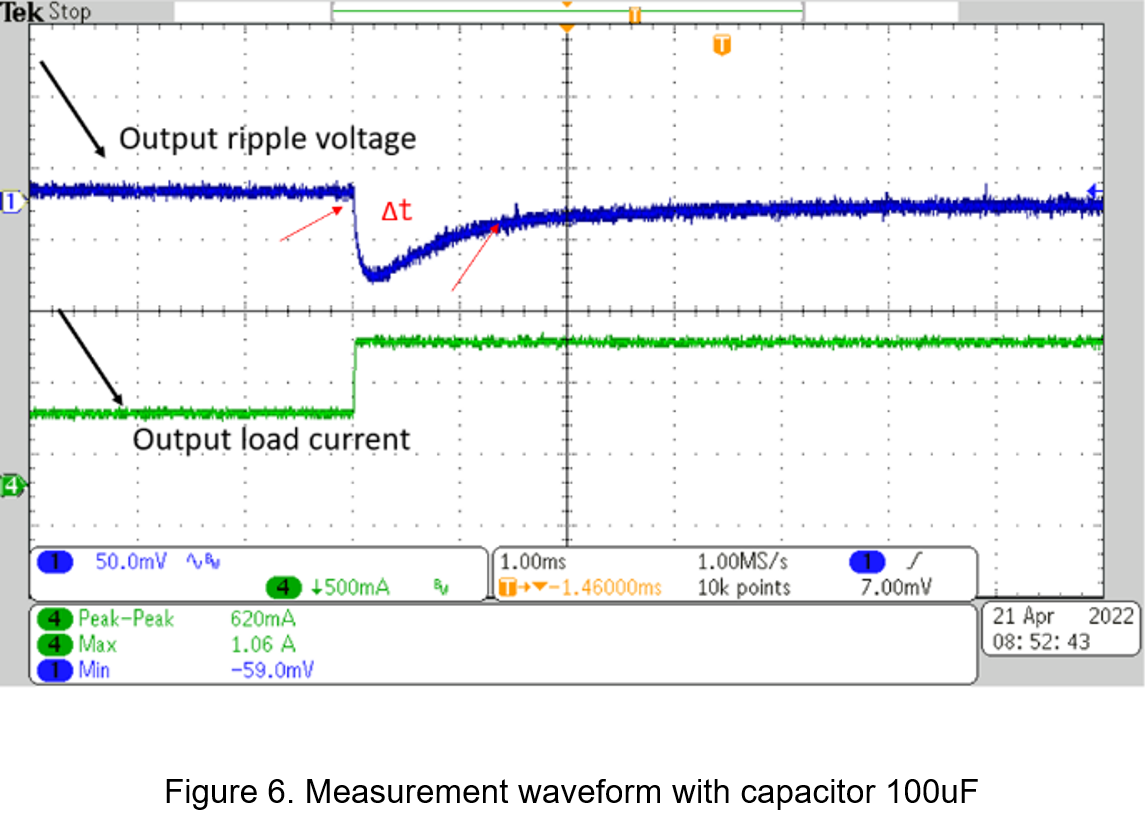
Figure 7 shows the measurement waveform of the capacitor 6494uF, and its transient voltage drop is 39mV.
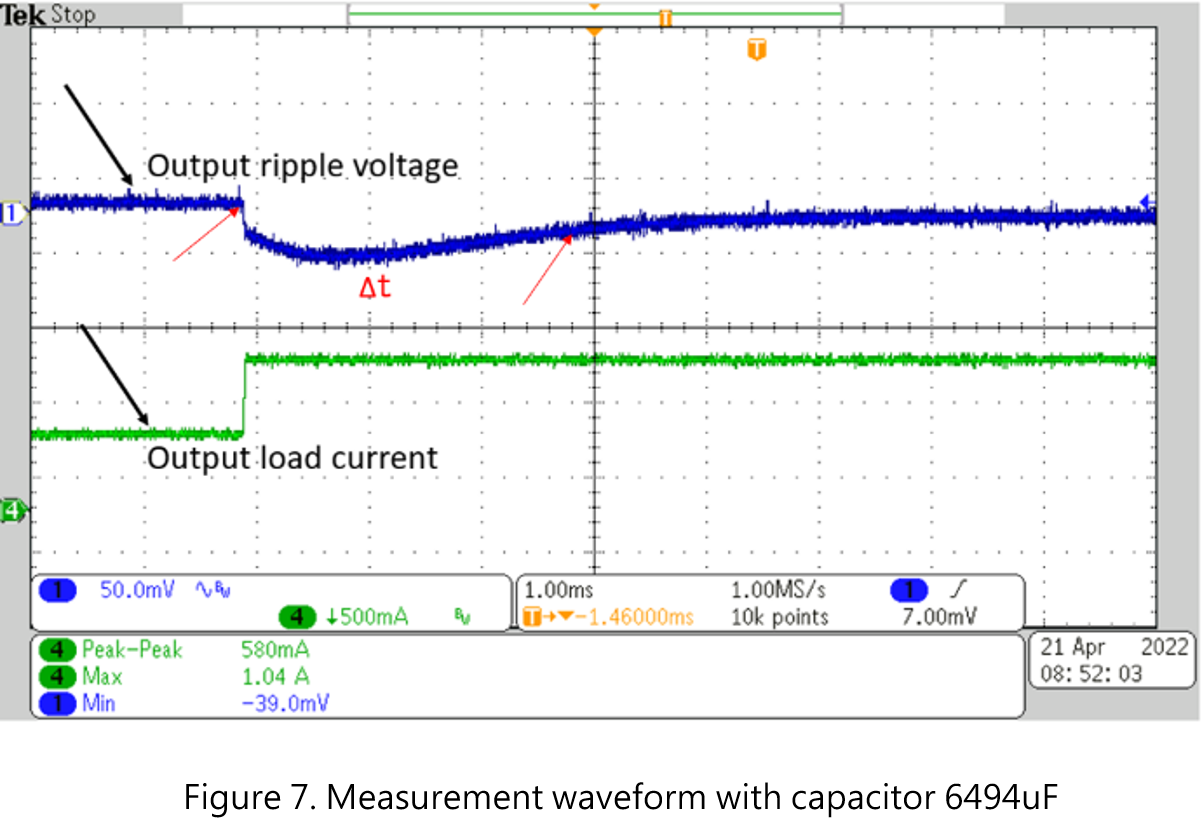
Δt in the above figure is the Recovery time
| Co | 44uF | 514uF | 6494uF |
| Vo | 4.90V | 4.90V | 4.99V |
| Io_peak-peak | 620mA | 620mA | 580mA |
| ΔVo | 73mV | 59mV | 39mV |
| Δt | 1.76mS | 1.95mS | 2.83mS |
The recovery time of Figure 5 and Figure 6 are relatively close, but the output voltage drop in Figure 5 is significantly higher than Figure 6 without an external capacitor. Although the ripple voltage is lower in Figure 7 and Figure 6, the recovery time is also significantly longer.
3、Conclusion
In the new industrial application field, AIOT and IIoT control units need to process a variety of information in time, which leads to the expansion of load application switching loads, so they tend to respond to the needs of faster and larger switching load power; on the other hand, the high output voltage Stability is still the direction that needs to be considered in system security design. Through the transient response test, observe the voltage transient under the output load change to observe the output stability of the power converter, and find the most appropriate improvement method from the factors affecting the transient response, so as to obtain more stable and efficient better power supply.
CTC is a professional service provider for high-end power supply modules (AC to DC Converter and DC to DC Converter) for critical applications worldwide since 30 years. Our core competence is to design and deliver products with leading technologies, competitive pricing, extremely flexible lead-time, global technical service and high-quality manufacturing (Made In Taiwan).
CTC is the only corporation certificated with ISO-9001, IATF-16949, ISO22613(IRIS), and ESD/ANSI-2020. We can 100% ensure not only the product, but also our workflow and service to match quality management system for every high-end application from the very beginning. From design to manufacturing and technical support, every single detail is operated under highest standard.

